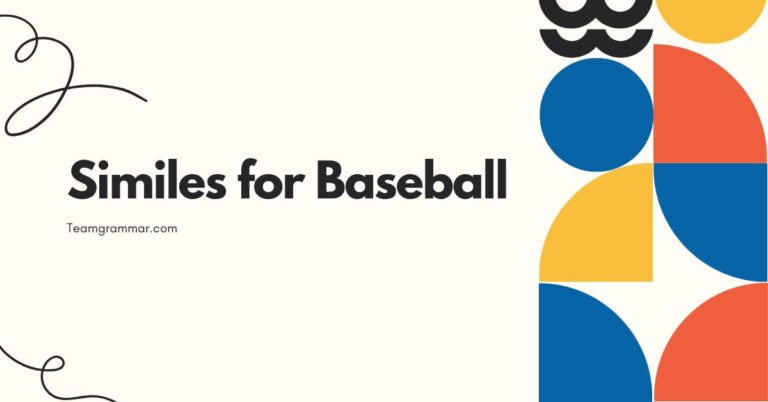51 Similes for Lonely: Mastering Figurative Language
Understanding similes is crucial for enhancing your descriptive writing and adding depth to your communication. Similes, a key component of figurative language, allow you to draw comparisons between seemingly unrelated things, creating vivid imagery and conveying emotions effectively.
This skill is invaluable for writers, poets, and anyone looking to express themselves with greater nuance and impact. This article will guide you through the intricacies of using similes to describe loneliness, offering numerous examples and practical exercises to help you master this powerful literary device.
Whether you are a student, a writer, or simply someone interested in improving your English, this comprehensive guide will provide you with the knowledge and tools you need to use similes effectively.
Table of Contents
- Introduction
- Definition of Simile
- Structural Breakdown of Similes
- Types of Similes
- Examples of Similes for Lonely
- Usage Rules for Similes
- Common Mistakes When Using Similes
- Practice Exercises
- Advanced Topics in Similes
- Frequently Asked Questions
- Conclusion
Definition of Simile
A simile is a figure of speech that directly compares two different things using the words “like” or “as.” The purpose of a simile is to create a vivid image or to emphasize a particular quality by associating it with something familiar or easily understood. Similes are a fundamental tool in descriptive writing and poetry, allowing writers to convey complex emotions and ideas in a relatable and engaging way.
Understanding similes is essential for both interpreting and creating effective written and spoken communication.
In essence, a simile asserts a similarity between two unlike things. This comparison helps to illuminate a specific characteristic of the subject being described.
For example, saying “He was as brave as a lion” does not mean the person literally is a lion, but rather that he possesses the quality of bravery associated with lions. This figurative comparison adds depth and color to the description, making it more impactful for the reader or listener.
Structural Breakdown of Similes
The basic structure of a simile consists of three main components: the subject being described, the word “like” or “as,” and the object to which the subject is being compared. Recognizing these components is crucial for both constructing and interpreting similes effectively.
Let’s break down each element in more detail:
- Subject: This is the person, place, thing, or idea that is being described. It is the focus of the simile.
- Comparison Word: This is either “like” or “as.” These words explicitly indicate that a comparison is being made.
- Object of Comparison: This is the person, place, thing, or idea to which the subject is being compared. It provides a point of reference for understanding the subject’s qualities.
Consider the simile: “She was as quiet as a mouse.” Here, “She” is the subject, “as” is the comparison word, and “a mouse” is the object of comparison. This structure clearly conveys the idea that the subject possesses the quality of quietness, similar to that of a mouse.
Another example is: “He felt like a fish out of water.” In this case, “He” is the subject, “like” is the comparison word, and “a fish out of water” is the object of comparison. This simile suggests that the subject feels uncomfortable or out of place, similar to how a fish would feel outside of its natural environment.
Types of Similes
While all similes share the same basic structure, they can be categorized based on the type of comparison they make or the specific effect they create. Understanding these different types can help you use similes more effectively in your writing and communication.
Direct Similes
Direct similes are the most common type, explicitly using “like” or “as” to make a comparison. These similes clearly state the similarity between two things, leaving little room for misinterpretation.
Implied Similes
Implied similes suggest a comparison without explicitly stating it using “like” or “as.” These similes often use metaphors or other figurative language to create a more subtle connection between two things.
Negative Similes
Negative similes emphasize a lack of similarity between two things, often used for humorous or ironic effect. These similes highlight the differences rather than the similarities.
Examples of Similes for Lonely
Loneliness is a complex emotion that can be difficult to describe directly. Similes can be particularly effective in conveying the feeling of isolation and disconnection.
Here are some examples of similes that capture the essence of loneliness, categorized by the comparison word used.
Similes Using “Like”
These similes use the word “like” to draw comparisons between the feeling of loneliness and other relatable experiences or images. They aim to make the abstract emotion of loneliness more tangible and understandable.
The table below provides a comprehensive list of similes using “like” to describe loneliness. Each simile offers a unique perspective on the emotion, highlighting different aspects of the experience.
| Simile | Explanation |
|---|---|
| He felt like the last leaf on a barren tree. | Describes the feeling of being the only one remaining, isolated and vulnerable. |
| She was lonely, like a single star in a vast, dark sky. | Emphasizes the feeling of being isolated and insignificant in a large, indifferent world. |
| His heart ached like a hollow drum. | Conveys the emptiness and resonating pain of loneliness. |
| They were as lonely as a lighthouse keeper on a deserted island. | Highlights the isolation and solitude of being completely alone. |
| The house felt like a tomb after everyone left. | Emphasizes the silence and emptiness of a place without people. |
| He felt like a ghost, unseen and unheard. | Describes the feeling of being invisible and disconnected from the world. |
| She was as lonely as a cloud floating aimlessly in the sky. | Conveys the feeling of being without purpose or direction. |
| His voice sounded like an echo in an empty canyon. | Highlights the lack of response and the feeling of being unheard. |
| They felt like strangers in their own home. | Emphasizes the feeling of alienation and disconnection from familiar surroundings. |
| She was as lonely as a forgotten book on a dusty shelf. | Conveys the feeling of being neglected and overlooked. |
| He felt like a ship lost at sea. | Describes the feeling of being without direction and guidance. |
| She was as lonely as a lone wolf howling at the moon. | Highlights the primal and instinctual nature of loneliness. |
| His laughter sounded like a distant memory. | Emphasizes the fading joy and the presence of sadness. |
| They felt like actors on an empty stage. | Conveys the feeling of performing for no one and lacking an audience. |
| She was as lonely as a snowman in July. | Highlights the feeling of being out of place and time. |
| He felt like a broken record, repeating the same sad song. | Describes the repetitive and monotonous nature of loneliness. |
| She was as lonely as a tree standing alone in a field. | Emphasizes the isolation and lack of companionship. |
| His heart felt like a cold, empty room. | Conveys the lack of warmth and connection in his emotional state. |
| They felt like puzzle pieces that didn’t fit. | Highlights the feeling of not belonging and being incompatible with others. |
| She was as lonely as a dandelion seed floating in the wind. | Conveys the feeling of being adrift and without roots. |
| He felt like a single sock missing its pair. | Emphasizes the feeling of incompleteness and longing for connection. |
| She was as lonely as an old photograph fading with time. | Highlights the feeling of being forgotten and losing relevance. |
| His dreams felt like distant planets. | Conveys the feeling of unattainable desires and goals. |
| They felt like silent movie stars, acting without sound. | Emphasizes the feeling of being unheard and unseen. |
| She was as lonely as a scarecrow in an empty field. | Highlights the feeling of being stationary and without purpose. |
Similes Using “As”
These similes use the word “as” to create comparisons, often emphasizing a specific quality or characteristic of loneliness. They provide a direct link between the feeling and a relatable image or experience.
The following table presents a variety of similes using “as” to illustrate the feeling of loneliness. Each simile offers a different perspective, adding depth and nuance to the description.
| Simile | Explanation |
|---|---|
| He was as alone as a single grain of sand on a vast beach. | Emphasizes the feeling of insignificance and isolation in a large, impersonal world. |
| She felt as isolated as a remote island. | Highlights the feeling of being cut off from others and the outside world. |
| He was as disconnected as a phone line that’s been cut. | Conveys the feeling of being unable to communicate or connect with others. |
| She felt as empty as a dried-up well. | Emphasizes the lack of emotional fulfillment and the feeling of being drained. |
| He was as lost as a child in a crowded city. | Highlights the feeling of being overwhelmed and disoriented. |
| She felt as invisible as a shadow. | Conveys the feeling of being unnoticed and ignored. |
| He was as quiet as a graveyard at midnight. | Emphasizes the silence and lack of activity associated with loneliness. |
| She felt as unwanted as a weed in a garden. | Highlights the feeling of being rejected and unwelcome. |
| He was as forgotten as an old photograph in an attic. | Conveys the feeling of being neglected and overlooked. |
| She felt as numb as if she had been frozen. | Emphasizes the emotional detachment and lack of feeling associated with loneliness. |
| He was as still as a statue in a park. | Highlights the lack of movement and engagement with the world. |
| She felt as adrift as a boat without a sail. | Conveys the feeling of being without direction or purpose. |
| He was as out of place as a penguin in the desert. | Emphasizes the feeling of not belonging and being incompatible with the environment. |
| She felt as transparent as glass. | Highlights the feeling of being easily seen through and lacking depth. |
| He was as silent as the grave. | Emphasizes the complete lack of communication and connection. |
| She felt as though she was on another planet. | Conveys the feeling of alienation and disconnection from reality. |
| He was as detached as an astronaut in space. | Highlights the feeling of being separated from humanity and the world. |
| She felt as if she were the last person on earth. | Emphasizes the extreme isolation and solitude of loneliness. |
| He was as solitary as a monk in a monastery. | Highlights the chosen or imposed state of being alone. |
| She felt as though she were trapped in a bubble. | Conveys the feeling of being isolated and unable to connect with the outside world. |
| He was as cheerless as a rainy day. | Emphasizes the lack of joy and happiness associated with loneliness. |
| She felt as if she were a character in a play no one was watching. | Highlights the feeling of being unnoticed and irrelevant. |
| He was as restless as a caged bird. | Conveys the feeling of being trapped and unable to escape the loneliness. |
| She felt as though she were a painting hanging in an empty gallery. | Emphasizes the feeling of being on display but unappreciated. |
| He was as remote as a star in a distant galaxy. | Highlights the feeling of being far away and unreachable. |
Similes with Implied Comparison
These similes do not use “like” or “as” directly, but rather imply a comparison through the use of vivid imagery and figurative language. They require the reader to make the connection between the feeling of loneliness and the image being presented.
The table below provides examples of similes with implied comparisons to describe loneliness. These similes rely on evocative imagery and metaphorical language to convey the feeling of isolation.
| Simile | Explanation |
|---|---|
| His loneliness was a vast, echoing chamber. | Implies that his loneliness is like a large, empty space where his feelings resonate without response. |
| Her heart was a desolate island. | Suggests that her heart is like a remote and uninhabited place, isolated from connection. |
| His spirit, a barren landscape. | Implies that his spirit is like a lifeless and unproductive area, devoid of joy and connection. |
| Her days, a monotonous melody. | Suggests that her days are like a repetitive and uninteresting song, lacking variation and excitement. |
| His laughter, a ghost in the wind. | Implies that his laughter is like a faint and fleeting memory, no longer present in his life. |
| Her tears, a silent waterfall. | Suggests that her tears are like a continuous and unexpressed flow of sadness. |
| His dreams, shattered glass. | Implies that his dreams are like broken pieces, symbolizing disappointment and unrealized hopes. |
| Her hopes, withered flowers. | Suggests that her hopes are like decaying blooms, representing lost potential and fading dreams. |
| His world, a muted film. | Implies that his world is like a silent and colorless movie, lacking vibrancy and engagement. |
| Her soul, a locked room. | Suggests that her soul is like a closed and inaccessible space, unable to connect with others. |
| His memories, faded photographs. | Implies that his memories are like old and unclear images, representing a distant and fading past. |
| Her voice, a whisper in the dark. | Suggests that her voice is like a soft and unheard sound, lost in the vastness of loneliness. |
| His thoughts, a labyrinth of solitude. | Implies that his thoughts are like a complex and confusing maze, leading to further isolation. |
| Her presence, an unnoticed shadow. | Suggests that her presence is like an unseen and ignored figure, lacking recognition and importance. |
| His future, an unwritten book. | Implies that his future is like a blank and uncertain story, without direction or purpose. |
| Her life, a solitary journey. | Suggests that her life is like a lonely and unaccompanied voyage, without companionship or support. |
| His heart, a frozen wasteland. | Implies that his heart is like a cold and desolate area, devoid of warmth and affection. |
| Her spirit, a flickering candle. | Suggests that her spirit is like a weak and unsteady flame, struggling to stay alive in loneliness. |
| His days, an endless winter. | Implies that his days are like a long and bleak season, lacking warmth and joy. |
| Her silence, a deafening scream. | Suggests that her silence is like a powerful and unspoken expression of pain and isolation. |
Usage Rules for Similes
To use similes effectively, it’s important to follow certain guidelines. These rules ensure that your similes are clear, impactful, and appropriate for the context in which they are used.
- Choose Relevant Comparisons: The object of comparison should have a clear and relevant connection to the subject being described. The similarity should be easily understood by the reader.
- Avoid Clichés: Overused similes can be predictable and lack impact. Strive to create original and imaginative comparisons.
- Maintain Clarity: The simile should enhance understanding, not confuse the reader. Ensure that the comparison is straightforward and easy to grasp.
- Consider the Tone: The simile should be appropriate for the tone of your writing. A humorous simile may be out of place in a serious or somber context.
- Use Sparingly: Overusing similes can make your writing feel cluttered and artificial. Use them judiciously to create emphasis and impact.
For example, instead of saying “He was as lonely as a person,” which is too obvious and lacks impact, try “He was as lonely as a single tree standing in an empty field.” This provides a more vivid and relatable image.
Common Mistakes When Using Similes
Even experienced writers can make mistakes when using similes. Understanding these common errors can help you avoid them and improve the quality of your writing.
- Using Clichéd Similes: Overused similes like “as blind as a bat” or “as quiet as a mouse” lack originality and impact.
- Creating Illogical Comparisons: The comparison should make sense and be easily understood. Avoid comparing things that have no clear connection.
- Being Too Vague: The simile should be specific enough to create a clear image in the reader’s mind. Avoid vague or abstract comparisons.
- Overusing Similes: Too many similes can clutter your writing and make it feel forced. Use them sparingly for maximum impact.
Here are some examples of common mistakes and how to correct them:
| Incorrect | Correct | Explanation |
|---|---|---|
| He was as lonely as a person. | He was as lonely as a single star in the night sky. | The corrected simile provides a more vivid and evocative image. |
| She felt like an object. | She felt like a forgotten toy in the attic. | The corrected simile provides a more specific and relatable comparison. |
| His loneliness was like something. | His loneliness was like a vast, empty desert. | The corrected simile provides a clearer and more descriptive comparison. |
Practice Exercises
Test your understanding of similes by completing the following exercises. These exercises will help you practice identifying, creating, and correcting similes.
Exercise 1: Identifying Similes
Identify the similes in the following sentences:
- She felt like a ghost, wandering through the empty halls.
- His heart was as cold as ice.
- The silence was a heavy blanket.
- He was as lost as a ship without a sail.
- Her voice sounded like a distant echo.
- The room was as dark as night.
- He felt like a stranger in his own land.
- Her smile was as bright as the sun.
- The city was like a jungle.
- He was as brave as a lion.
| Question | Answer |
|---|---|
| 1. She felt like a ghost, wandering through the empty halls. | Simile: “like a ghost” |
| 2. His heart was as cold as ice. | Simile: “as cold as ice” |
| 3. The silence was a heavy blanket. | This is a metaphor, not a simile. |
| 4. He was as lost as a ship without a sail. | Simile: “as lost as a ship without a sail” |
| 5. Her voice sounded like a distant echo. | Simile: “like a distant echo” |
| 6. The room was as dark as night. | Simile: “as dark as night” |
| 7. He felt like a stranger in his own land. | Simile: “like a stranger” |
| 8. Her smile was as bright as the sun. | Simile: “as bright as the sun” |
| 9. The city was like a jungle. | Simile: “like a jungle” |
| 10. He was as brave as a lion. | Simile: “as brave as a lion” |
Exercise 2: Creating Similes
Complete the following sentences by adding a simile:
- He felt as lonely as __________.
- She was like __________.
- His heart ached like __________.
- They were as isolated as __________.
- The room felt like __________.
- She was as quiet as __________.
- He was as still as __________.
- The silence was like __________.
- She was as forgotten as __________.
- He felt like __________.
| Question | Possible Answer |
|---|---|
| 1. He felt as lonely as __________. | a single cloud in the sky. |
| 2. She was like __________. | a lone wolf howling at the moon. |
| 3. His heart ached like __________. | a hollow drum. |
| 4. They were as isolated as __________. | a lighthouse keeper on a deserted island. |
| 5. The room felt like __________. | a tomb. |
| 6. She was as quiet as __________. | a mouse. |
| 7. He was as still as __________. | a statue. |
| 8. The silence was like __________. | a heavy blanket. |
| 9. She was as forgotten as __________. | an old book on a shelf. |
| 10. He felt like __________. | a fish out of water. |
Exercise 3: Correcting Similes
Rewrite the following sentences to improve the similes:
- He was as lonely as a person.
- She felt like a thing.
- His heart was like something.
- They were as isolated as a place.
- The room felt like a room.
- She was as quiet as quiet.
- He was as still as still.
- The silence was like nothing.
- She was as forgotten as forgotten.
- He felt like a feeling.
| Question | Corrected Answer |
|---|---|
| 1. He was as lonely as a person. | He was as lonely as a single star in the night sky. |
| 2. She felt like a thing. | She felt like a forgotten toy in the attic. |
| 3. His heart was like something. | His heart was like a vast, empty desert. |
| 4. They were as isolated as a place. | They were as isolated as a remote island. |
| 5. The room felt like a room. | The room felt like a tomb. |
| 6. She was as quiet as quiet. | She was as quiet as a mouse. |
| 7. He was as still as still. | He was as still as a statue. |
| 8. The silence was like nothing. | The silence was like a heavy blanket. |
| 9. She was as forgotten as forgotten. | She was as forgotten as an old book on a shelf. |
| 10. He felt like a feeling. | He felt like a fish out of water. |
Advanced Topics in Similes
For advanced learners, exploring more complex aspects of similes can further enhance their writing skills. These topics include:
Extended Similes
Extended similes develop the comparison over several sentences or even paragraphs, creating a more detailed and nuanced image.
Subverted Similes
Subverted similes intentionally break the expected pattern, often for humorous or ironic effect. They challenge the reader’s expectations and create a surprising twist.
Similes in Different Genres
Understanding how similes are used in different genres, such as poetry, fiction, and non-fiction, can help you tailor your writing to specific audiences and purposes.
Frequently Asked Questions
- What is the difference between a simile and a metaphor?
A simile compares two things using “like” or “as,” while a metaphor directly states that one thing is another. A simile suggests a similarity, while a metaphor asserts an identity.
- Can a simile be a cliché?
Yes, overused similes become clichés. It’s important to strive for originality and create fresh comparisons.
- How can I make my similes more effective?
Choose relevant and specific comparisons, avoid clichés, and use similes sparingly to create emphasis.
- What is an implied simile?
An implied simile suggests a comparison without using “like” or “as,” often through the use of metaphors or other figurative language.
- Is it okay to use similes in formal writing?
Yes, similes can be used in formal writing, but they should be used judiciously and be appropriate for the tone and audience.
- How do I avoid making my similes too vague?
Be specific in your comparison and choose objects that create a clear image in the reader’s mind.
- What is the purpose of using similes?
Similes are used to create vivid imagery, emphasize qualities, and make abstract concepts more understandable.
- Can I use similes in everyday conversation?
Yes, similes can add color and expressiveness to your everyday conversations. They can help you communicate your ideas more effectively.
- How do I identify a simile in a sentence?
Look for the words “like” or “as” indicating a comparison between two different things. If these words are present and a comparison is being made, it’s likely a simile.
- What types of words or phrases should I avoid when creating a simile?
Avoid vague words or phrases that do not create a clear image or comparison. For example, instead of saying “He was as lonely as something,” try “He was as lonely as a single tree standing in an empty field.”
Conclusion
Mastering the use of similes is a valuable skill for anyone looking to enhance their writing and communication abilities. By understanding the structure, types, and usage rules of similes, you can create vivid imagery and convey complex emotions with greater impact.
Remember to avoid clichés, choose relevant comparisons, and use similes sparingly to achieve the best results. Practice identifying, creating, and correcting similes to solidify your understanding and improve your fluency.
With consistent effort, you can harness the power of similes to transform your writing and express yourself with greater clarity and creativity. Remember that effective communication relies on practice, so incorporate similes into your daily writing and speech to truly master this skill.







